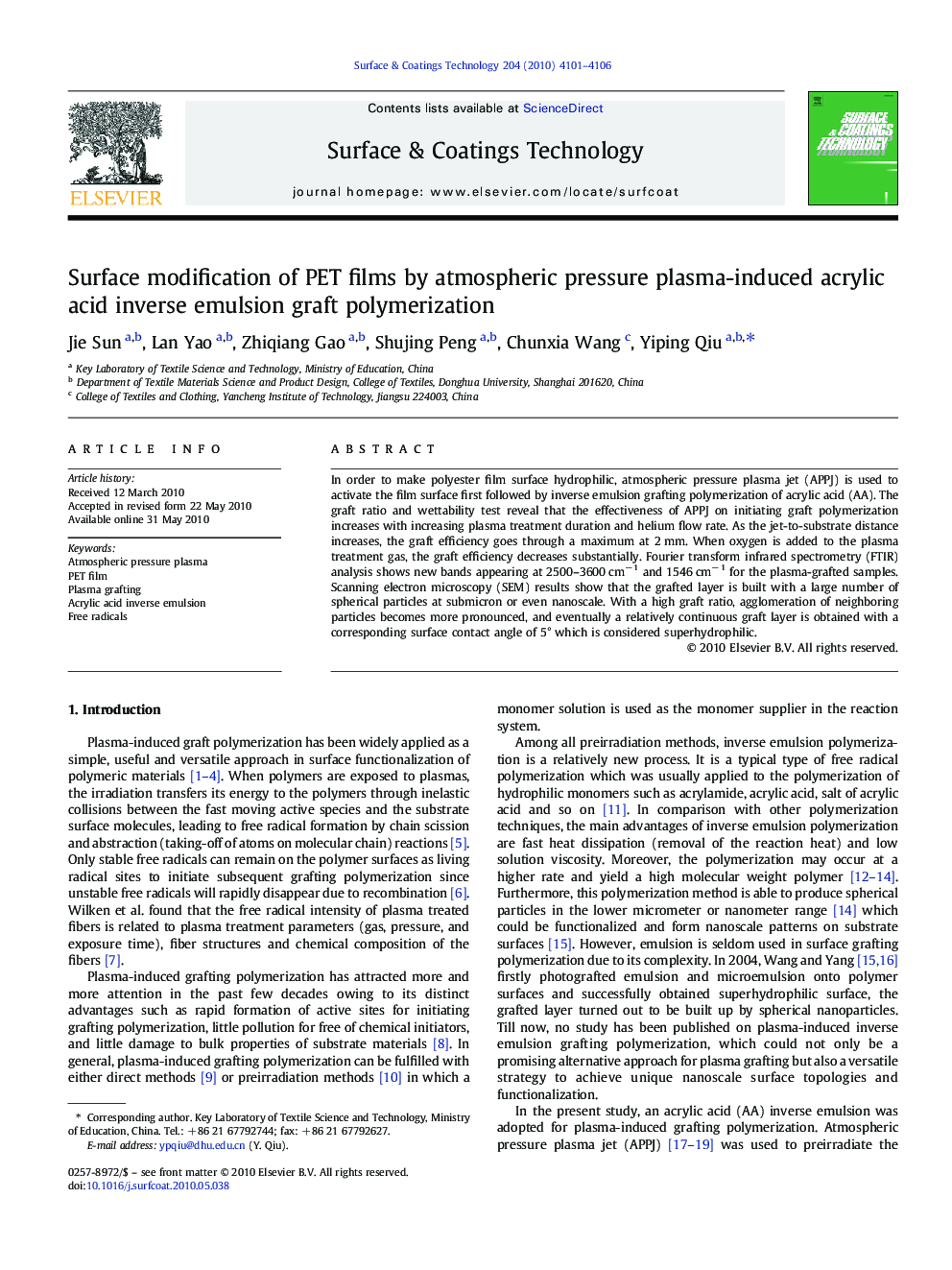| Article ID | Journal | Published Year | Pages | File Type |
|---|---|---|---|---|
| 1658959 | Surface and Coatings Technology | 2010 | 6 Pages |
In order to make polyester film surface hydrophilic, atmospheric pressure plasma jet (APPJ) is used to activate the film surface first followed by inverse emulsion grafting polymerization of acrylic acid (AA). The graft ratio and wettability test reveal that the effectiveness of APPJ on initiating graft polymerization increases with increasing plasma treatment duration and helium flow rate. As the jet-to-substrate distance increases, the graft efficiency goes through a maximum at 2 mm. When oxygen is added to the plasma treatment gas, the graft efficiency decreases substantially. Fourier transform infrared spectrometry (FTIR) analysis shows new bands appearing at 2500–3600 cm− 1 and 1546 cm− 1 for the plasma-grafted samples. Scanning electron microscopy (SEM) results show that the grafted layer is built with a large number of spherical particles at submicron or even nanoscale. With a high graft ratio, agglomeration of neighboring particles becomes more pronounced, and eventually a relatively continuous graft layer is obtained with a corresponding surface contact angle of 5° which is considered superhydrophilic.
